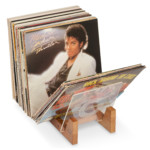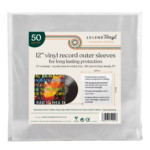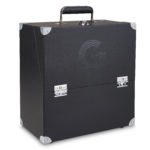So, you have just started record collecting and want to come to learn to understand just exactly what the difference is between a moving coil vs moving magnet cartridge? Or, perhaps you are simply wanting to broaden your knowledge for the purpose of investing in a different kind of cartridge for your own setup, one that is going to take your stereo system to new dimensions?
Whatever your reason for being here, I welcome you along as we attempt to elucidate for all today the differences between the moving coil vs moving magnet cartridge, the various pro’s and con’s of each, and what makes them tick.

Table of Contents
- What is a Cartridge?
- Moving Coil Cartridge
- Moving Magnet Cartridge
- Final Tones
- FAQs Moving Coil vs Moving Magnet
What is a Cartridge?
So, first up in our discussion of moving coil vs moving magnet cartridges, it would be best if we reminded ourselves what a cartridge is in the first place, an important facet of how does vinyl work.
What many refer to as the needle or the stylus is that which is held within the turntable cartridge, reading the grooves of a record and turning them into audio signals – you might have heard of them referred to as magnetic cartridges, phono cartridges, or moving coil cartridges. The cartridge, no matter by what it is referred, can almost always be found at the end of the tonearm, that being the mechanical arm that raises and lowers over the record in question.
They can be made from a whole host of different materials, ranging from plastic and metal, right through to more boutique options like wood and precious stones (for those feeling extra boujee). Despite the sheer amount of turntables out there, and therefore the varying range of different turntable cartridges they are kitted out with, there are a remarkable number of similarities between them all: a small magnet, wire coils, and the needle itself, tipped with another precious stone like diamond.
The cartridges on a turntable are likely to represent the price and quality of the vessel to which they are attached, thus if you have a more expensive record player the cartridge is more than likely going to be made of a mixed metal or even a precious metal like gold (a mean conductor if ever there were one). Likewise, on the inverse, a lesser turntable will be fitted with a cartridge made from aluminium or plastic or particle woods, like Medium Density Fibreboard (MDF, to you and me).
Being the central conduit between the vibrations on the surface of a record and the sounds that come out of the speakers, it ought to be easy to see how important it is as part of your turntable setup.
Moving Coil Cartridge
So, first up in our survey between moving coil vs moving magnet, we pour our headlights into the sockets of the moving coil cartridge.
The moving coil is a small electromagnetic generator with its inner magnet and coils reversed. Technically speaking, the coils are attached to the cantilever, moving within the field of a permanent magnet, with very small coils constructed from very fine wire.
Owing to its small size, the number of windings that such an armature can support is likewise small, with a similarly small output voltage. This makes the entire unit more easily susceptible to external noise, ground hum and the like, with the resulting signal from these moving coils being only a few hundred microvolts, if that.
It is, therefore, more of a challenge to design a dedicated preamp for this unit, with its lower than average noise inputs, as well as those needed to make a moving coil cartridge work in the first place. Most, instead, opt to use what is referred to as a step up transformer.
This might have been more of a problem in the past, but nowadays there are several brands and models of moving coil cartridges that have output levels that are on par with their moving magnet counterparts, effectively making this problem a thing of the past, though the historical repercussions still remain.
Because of their small size and need for precise handling, they are generally more expensive and thus often preferred by audiophiles and the like, who claim that they offer a better performance. This is, however, plainly subjective, and each record collector ought to make their own choice based on their own ears and their own preferences.
Benefits
Many purport that the moving coil vs moving magnet cartridge is lighter in weight. This should seem obvious, for the moving coil needs to be lighter in order to vibrate and move effectively within its bounds while still making contact with the wires in the back of the cartridge that connects it and vibrations it is the conduit for to the adjoining speakers. This can make it easier to manage the pressure and angle at which the entire cartridge itself make contact with the records you know and love.
Likewise, audiophile would have you believe that moving coil cartridges offer a more detailed sound. They believe that the vibrating coils within the cartridge are able to pick up more delicate changes in the fabric of the record as the stylus or needle is dragged across it.
Thus, the sound is believed to be fuller, with more precise highs and lows and mids, no matter how subtle. If you are someone who revels in the minute details of a recording, then a moving coil cartridge is going to be a must and something that you can’t do without, though I can certainly see why some might believe it to be a waste of time and money.
Weaknesses
One of the more obvious weaknesses of the moving coil vs moving magnet cartridge is the sheer expense of the former over the latter. The cost is not some negligible amount; it is rather significantly more than the moving magnet cartridge, hence why it is often the reserve of more financially able audiophiles. Moving coil cartridges cost more to manufacture owing to their small composition and more delicate and thus sensitive coils. As a result, they are also made from higher quality materials, separating them further from the common flock.
This added expense goes hand in hand with a more punctured relationship with maintenance. They are incredibly delicate and sensitive, and thus will require a licensed professional to fix them if something goes wrong, which it is more likely to since it is inherently more fragile. Where the magnets in a moving magnet cartridge can be replaced by just about anyone, the coils are delicate and need precise attention. If you are already bent on investing in a moving coil cartridge, then you ought to be prepared for the added expense of hiring a professional to help should something go wrong.
Moving Magnet Cartridge
Inversely, in a moving magnet cartridge, the cantilever within the stylus carries a small permanent magnet instead of operating on the basis of coils. The magnet is, however, positioned between two sets of fixed coils (at least in the case of a stereophonic cartridge), where the magnet and coil(s) combined form a small electromagnetic generator. The magnet vibrates in response to the stylus tracing the grooves of the record which induces a small current in the coils, thus sent forth to the stereo system and the adjoining speakers.
The magnet is small and has very little mass – and is likewise not joined mechanically to the cartridge as it might be in a ceramic cartridge – so it is believed that a properly adjusted stylus will follow the grooves on a record more truthfully, and yet will require less tracking force. We can understand this as the downward pressure that is enacted on a stylus where necessary to ensure that it traces as closely as possible the grooves it is being called upon to trace without going AWOL and jumping all about the place, as it might if you are trying to play a particularly warped record that is more potato chip than vinyl.
There are different gradations under the umbrella of moving magnet coil too. Moving iron and induced magnet types being those that entertain the use of a moving piece of iron or another ferrous* alloy metal coupled with the cantilever instead of a magnet. Inversely, there are those where a permanent and more large magnet is over the coils of the cartridge, overall providing the necessary and desired magnetic flux for sound to be emitted as required.
*of, relating to, or containing iron; being or containing divalent iron
Benefits
By contrast, moving magnet vs moving coil cartridges produce a steady sound that is consistently loud and works well with almost every amplifier you can imagine, not requiring any specialist knowledge to work with nor set up. The signal will of course still need some element of preamplification, but nowhere near as much.
Similarly, the moving magnet cartridge is easy to maintain. Unlike the moving coil cartridge, just about anyone can replace the inner magnet that keeps the cartridge working as it does. The user can do this themselves with very little guidance, all of which can be found online somewhere anyhow.
Turntable and record players installed with moving magnet cartridges are more than likely going to be easier to install, themselves being more compatible with a whole host more stereo setups and hi fi systems. Seeing as the cartridge itself is of a far higher output, it is easier to connect with household stereo equipment, eschewing the needing for specialised preamps.
Atop all of this, the moving magnet cartridge is less expensive than the largely overpriced moving coil cartridges, costing less to manufacture for their lesser amount of moving parts than their counterpart with the coils, rendering them a perfect option for those just starting out or not otherwise able to splash the cash.
Weaknesses
Thus, the strengths of the moving coil vs moving magnet cartridges will be the drawbacks of the moving magnet vs moving coil.
The moving magnet cartridge is inherently going to be heavier, as its central component – the magnet – is almost certainly going to be heavier than the lightweight and minute coils of their counterpart. They also need to be setup at a specific weight with a precise amount of pressure so as to avoid excess wear on the records it comes into contact with. A narrower stylus will do a world of good when coupled with a moving magnet cartridge.
Just as the moving coil cartridge is said to offer a more nuanced sound, the moving magnet cartridge is believed to offer a slightly less detailed sound. Magnets are less delicate than wire coils, heavier and more brutish, meaning the sound that is produced through a moving magnet cartridge is thicker, meatier and less nuanced. This can actually be a desirable trait for some genres of music, so if you are looking to spin a lot of dub records and the like then fire away.
Final Tones
So, there you have it! Hopefully you are feeling somewhat the wiser about the various differences and similarities between moving coil vs moving magnet cartridges, what makes them tick, and perhaps even feeling able to make decision of whether to invest in either one or the other!
FAQs Moving Coil vs Moving Magnet
Though there are admittedly several benefits of the moving coil vs moving magnet cartridge, neither is inherently better than the other. An audiophile might come at this saying that moving coil cartridges offer a more detailed sound, but if a collector is looking to spin records with a meatier and warmer tone, e.g. dub and the like, then the moving magnet cartridge is going to be the way to go.
The easiest way to tell if a cartridge contains a moving magnet or a moving coil would be to do some research online, which would save you the hassle and potential heartbreak of opening up the cartridge and doing some expensive or even irreparable harm to it. If necessary, though, this is possible and can indeed be done by just about anyone, though the utmost care ought to be taken, lest you need to replace certain parts inside, which will be even more expensive in the case of a moving coil cartridge.
Neither is inherently better, and in fact both have significant advantages and disadvantages. The moving magnet cartridge is the heavier of the two and the meatier in terms of tone, but also has a desirably higher output and is easier to maintain, not to mention being far more compatible with more types of hi fi setups, as well as being less expensive. Inversely, the magnet coil cartridge is the lighter of the two and offers a supposedly more nuanced sound palette, but is also considerably more expensive and more difficult to maintain, residing in the domain of the well off audiophile.
With proper care and due diligence, a moving coil cartridge ought to last about as long as its moving magnet cartridge brethren. That being said, the former is far more susceptible to breakages, for the coils within are inherently more delicate and fragile (one of the main selling points, the depth of audio playback). Likewise, if the coils are damaged it will take far more experienced hands and minds than the layperson who has just got into record collecting is likely to have, and thus you will need to hire a licensed professional to do the job.




